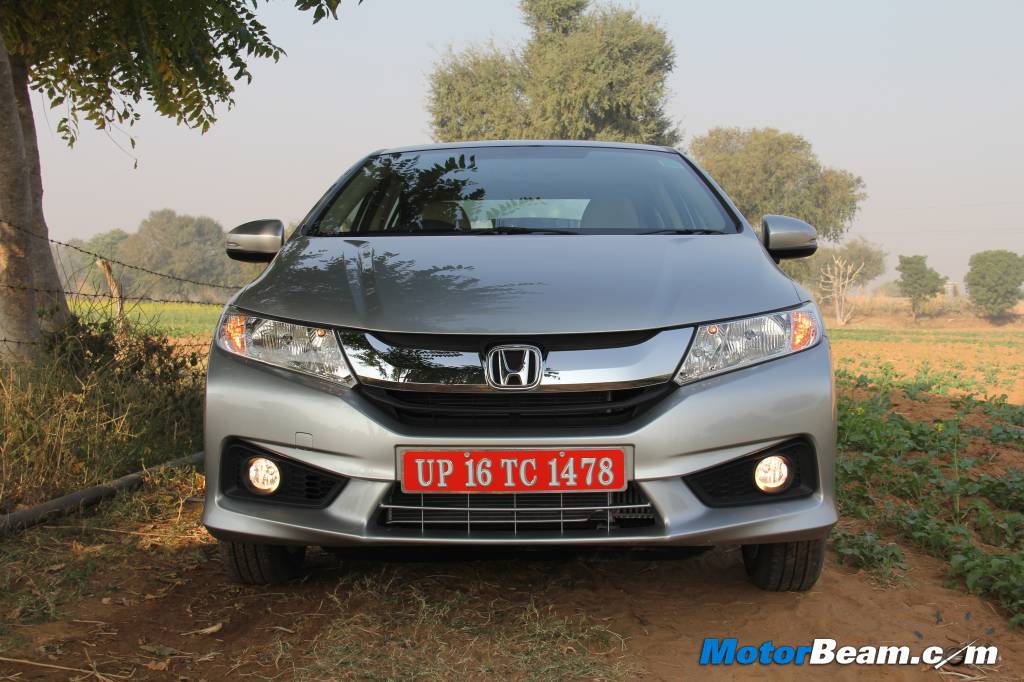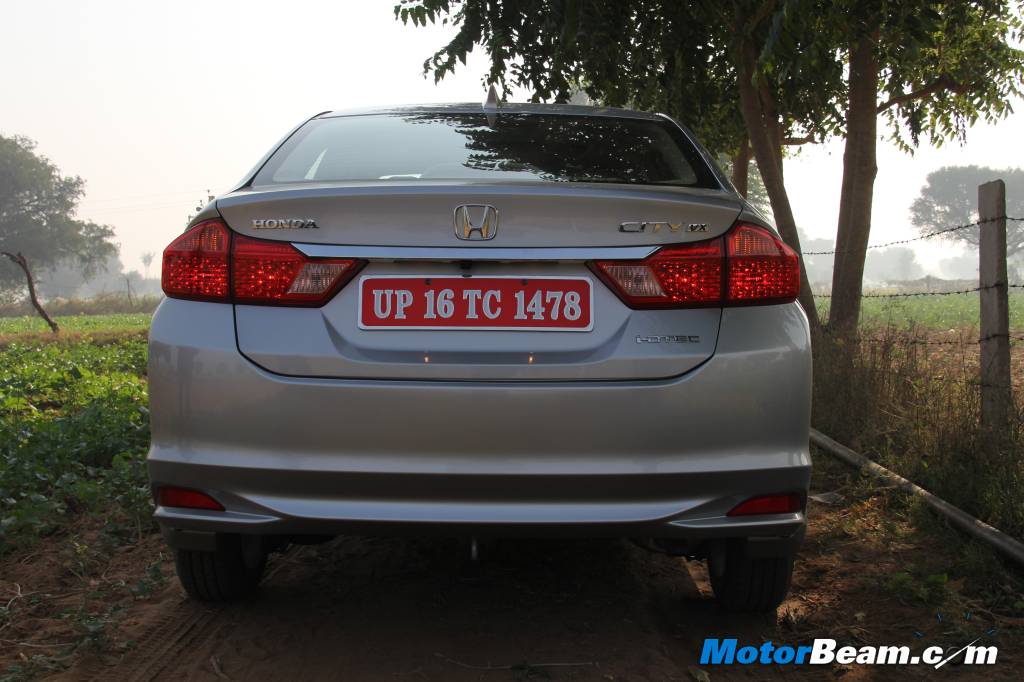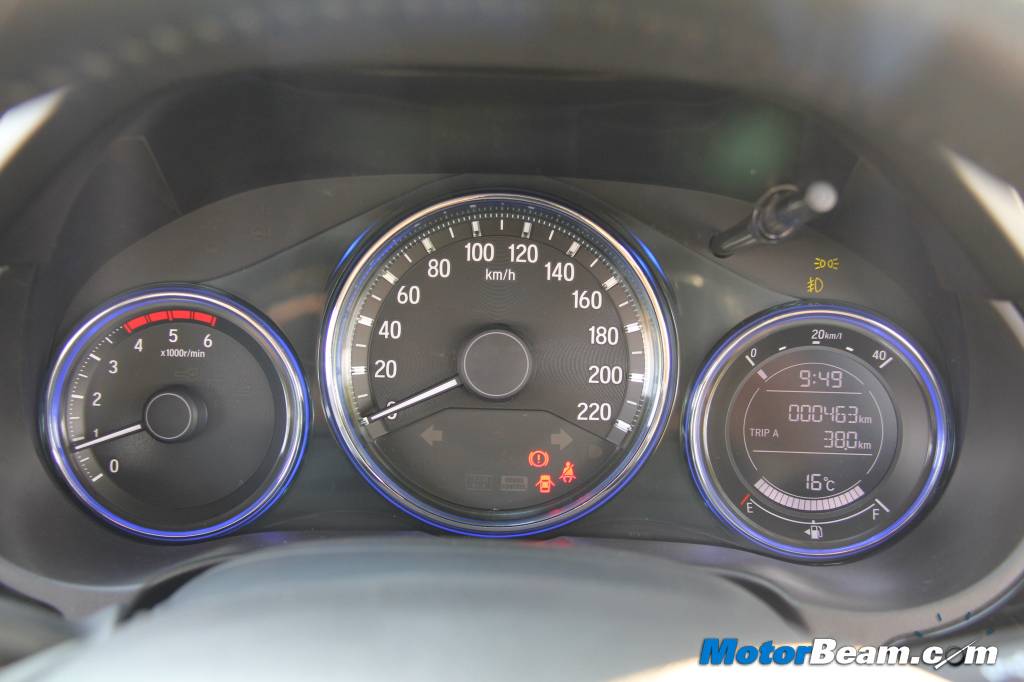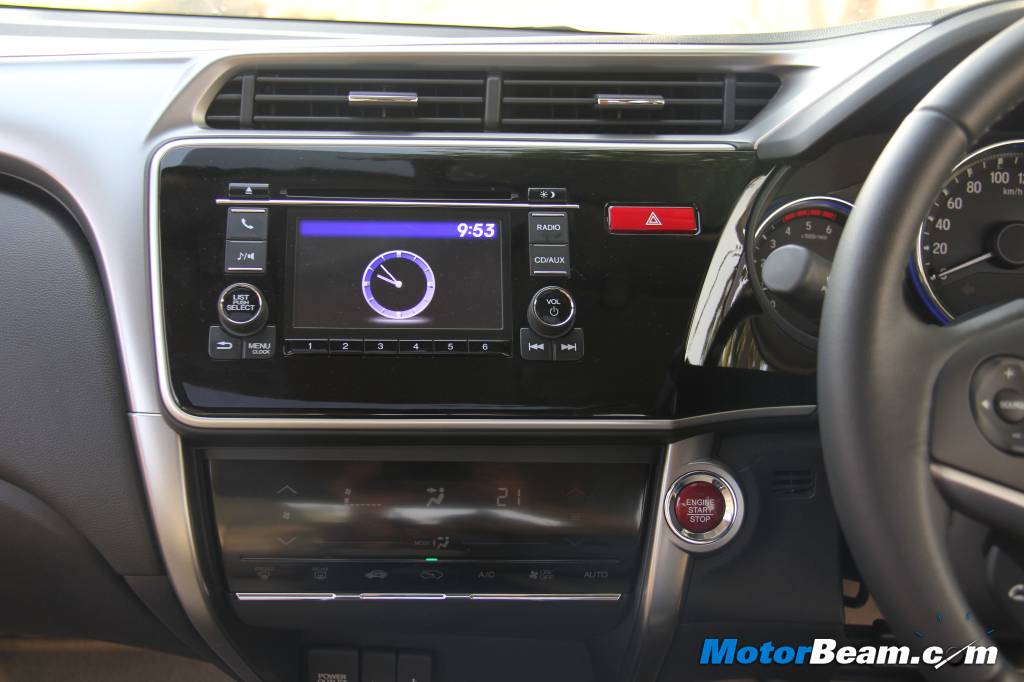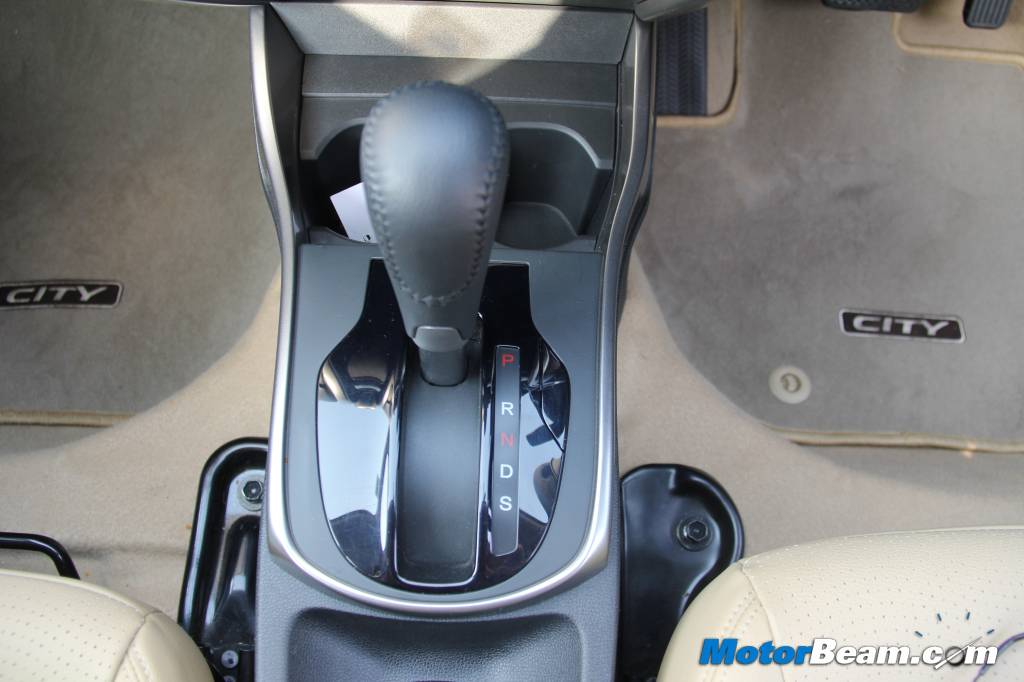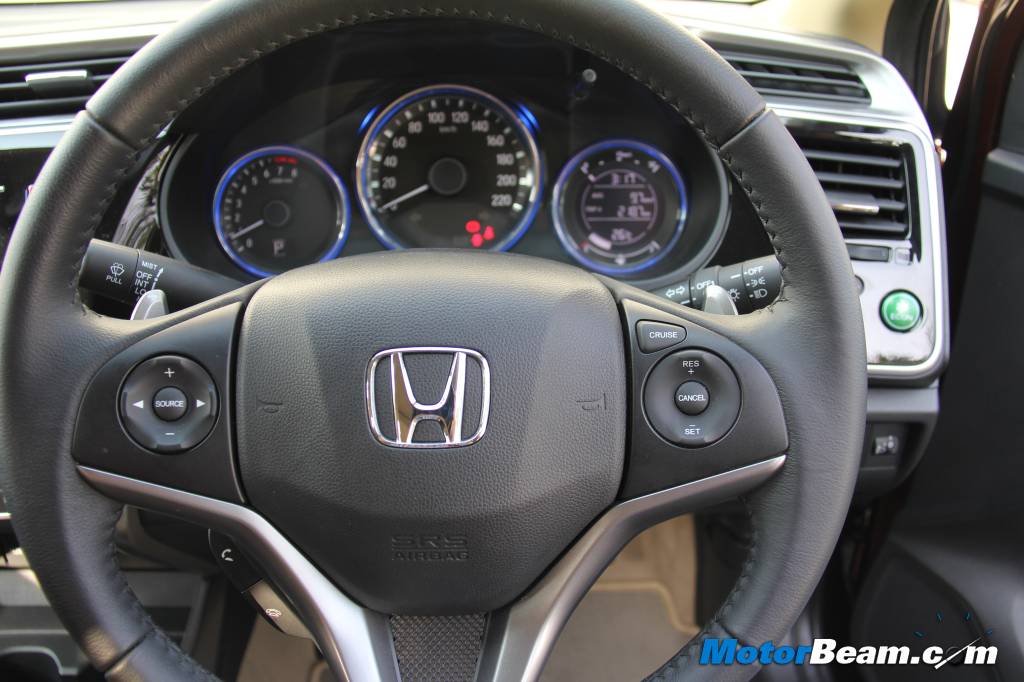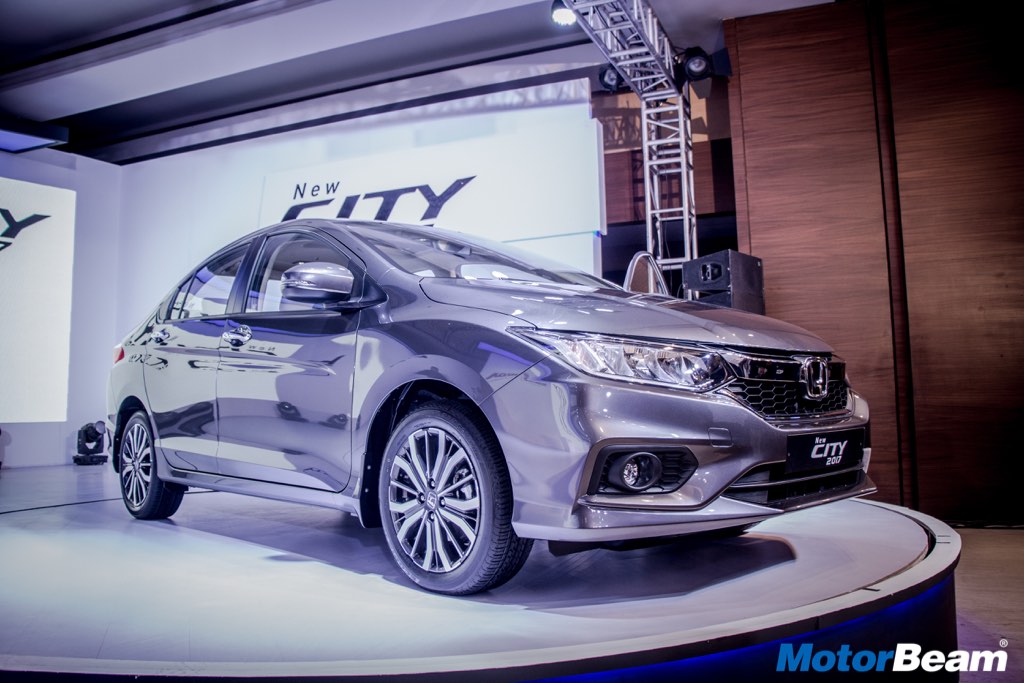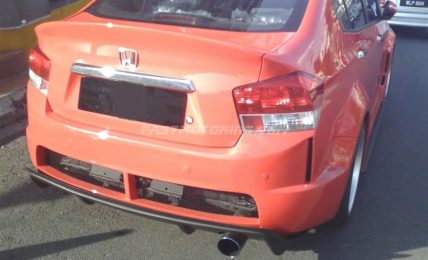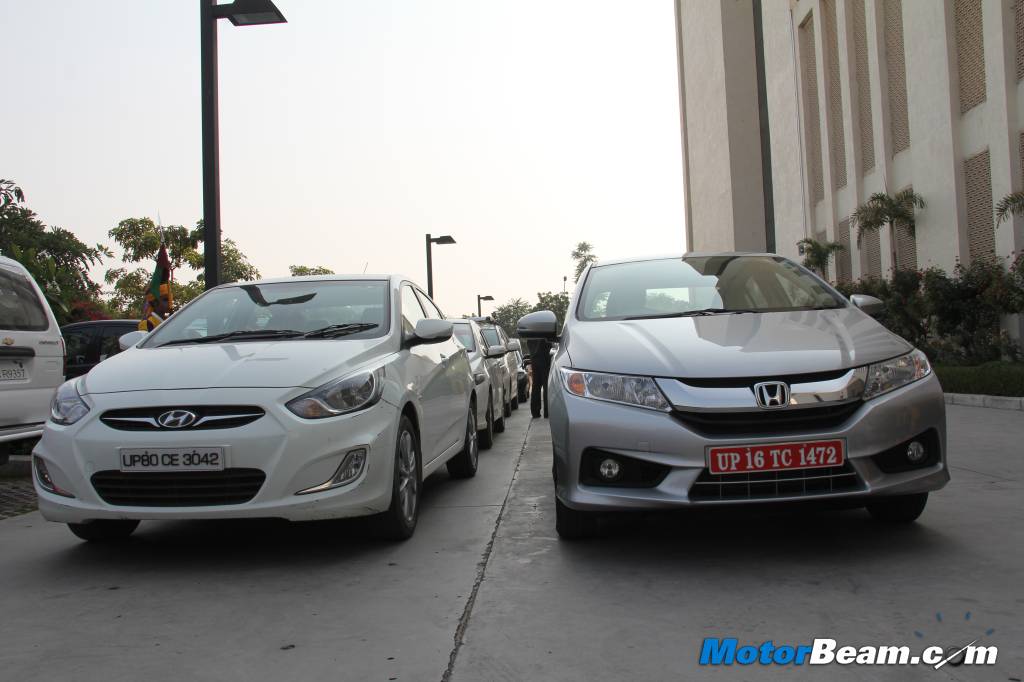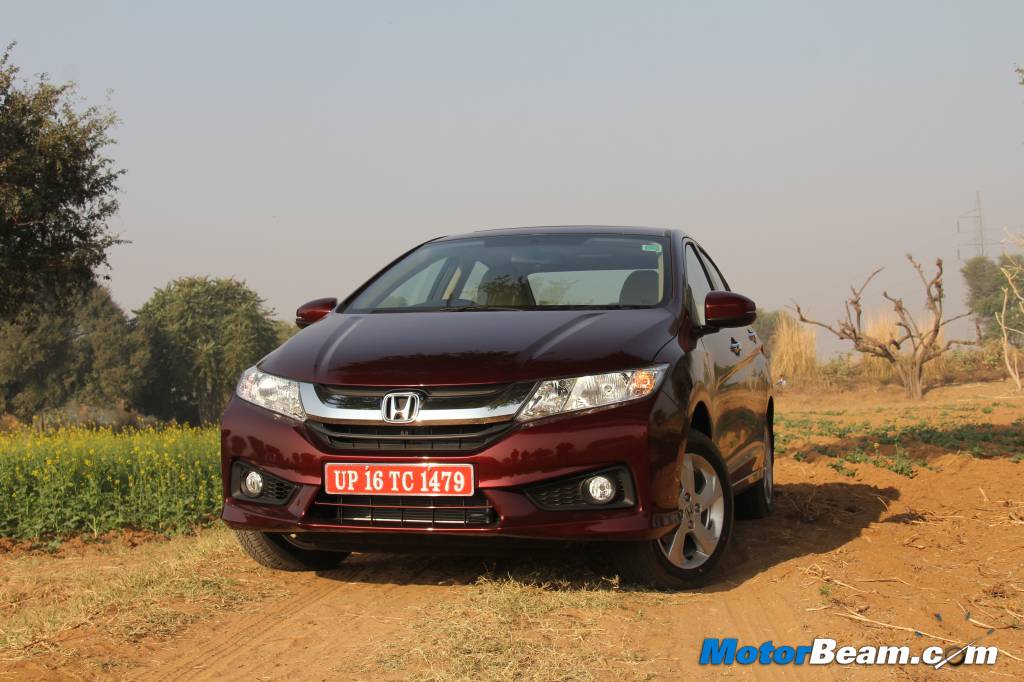
Honda City Review
Car Tested: 2014 Honda City VX (Fourth Generation)
Price OTR Mumbai: Rs. 8.78 – 13.49 lakhs
Honda has made the already fantastic City even better, widening its appeal.
There is absolutely no car in India which has a fan following like the Honda City. This is because the Japanese automaker was among the first few to launch a full sized sedan in India, way back in 1998 with the first generation Honda City. Fast forward 15-years and the fourth generation model is here, ready to claw back market share after losing steam to its rivals which had the diesel advantage. Honda has always given the City priority over other models and that is the reason the company always brings a new model when others least expected to (has happened with all the generation of the City). We all know the history of the Honda City, the second gen model came out in 2002 and was based on the Jazz (it was also introduced in China), third gen model came in 2008 and 5 years later the fourth generation City is all ready to give sleepless nights to other cars in the C-segment. Honda has been selling the City in 55 countries worldwide and 22 lakh units have been sold already.
Motor Quest: Honda revived the City nameplate in 1996 for the Asian market with the first generation model being based on the Civic. The first Honda City was launched in 1981 and technically the City brand is now in its sixth generation. However, since the first two generation models were hatchbacks, the City (sedan) is considered to be in it’s fourth generation now.
Exteriors – Car design hardly sees a revolution these days because manufacturers want to stick by the tried and tested formula to keep the identity of the vehicle intact. Thus the new Honda City also goes through an evolution and not a revolution, more so in the design department. Yes, to the uninitiated, the new City will pass off as the old car and that’s because both the third and fourth generation models have the same length and width. The new City is 10 mm taller though and in spite of the exact same dimensions, Honda has actually put in all new panels on the new car which are vastly different from the old model. This can be seen when one observes the lines carefully. Another thing worth noticing is the shark fin antenna, a BMW speciality. Plenty of chrome all around including on the grille, door handles and tail gate.
Length and width are same as old City, height has increased by 10 mm
The new City carries Honda’s new “Exciting H-Design” language which will soon feature on their other models as well. With a keen eye, you can easily make out the difference with the old model thanks to the extensive revisions made to the panels of the car, very evident when you see both these vehicles side by side. The highlight at the front are the new headlights and grille while the side reveals the chunkier curves and the clear cut panels. The rear is where the new City is vastly different from its predecessor. The wider BMW inspired tail lights get a chrome line connecting either sides of the body. So when the new City is viewed in isolation, it doesn’t seem much different but Honda has done extensive changes and the new City is an attractive car just like its forefathers. A new gold brown metallic is offered which appears different in different light conditions.
Interiors are attractive with multiple colours on the dashboard, quality levels are good
Interiors – The interiors of the new Honda City could pass off as a revolution. The dashboard which Honda calls ‘layered floating cockpit’ comes from the Jazz and is an attractive unit with excellent quality all around (good plastics, fit and finish but again not in the same league as its European rivals). The all black dash gets silver accents and piano black treatment in the form of gloss finish which looks very premium but easily catches fingerprints. The centre AC vents are a bit small but equally functional and the centre console is tilted towards the driver. The steering wheel has ergonomically placed buttons. There are plenty of storage spaces inside the cabin (including a toll receipt holder below the headlight leveller) and Honda has given the new City four power outlets (2 at the front and 2 at the rear) which is quite handy these days. The 5-inch infotainment system gets all sorts of connectivity options (including AUX, USB, iPod and Bluetooth) and also doubles up as a reverse camera display (there are three views – Wide, Normal and Top Down).
Rear seat has acres of space and wheelbase has been increased by 50 mm
While the exterior dimensions remain similar to the outgoing model, the interior sees an increase in wheelbase by a considerable 50 mm. This has resulted in the new City boasting of improved room for all passengers, specially the ones at the rear. Shoulder room has increased by 40 mm while knee room and legroom see an increment of 70 mm and 60 mm respectively. Honda claims the space at the rear is in the same league as cars two classes above (aka Accord segment). After sitting in the rear bench, we have to admit Honda has given Nissan reasons to worry as the Sunny no longer holds the advantage of having the best rear bench in its class. The City has plenty of space at the rear and the car also gets twin AC vents at the rear unlike the Sunny which has a fan blower. Almost flat floor, good seat padding, centrally mounted fuel tank (makes for a natural footrest) and generous all round room means the City can seat five in good comfort. However the rear seat doesn’t fold, nor does it have adjustable headrests and there is no headrest for the fifth passenger.
The instrument cluster is clean and easy to read and the three pods get chrome surrounds. The multi-information display also showcases real time mileage, average mileage, distance to empty, etc. The old City lacked features but the new City gets a plethora of them – keyless entry, leather seats, sunroof, reverse camera, climate control with touch panel, button start, electrically retracting rear view mirrors, auto-locking doors (at 20 km/hr), cruise control, leather seats, etc (no twin blade wipers though). The audio system gets 8-speakers and sound output is good. The horn doesn’t sound good enough and doesn’t seem to be effective on national highways. All round visibility is excellent and the cabin feels airy thanks to the extensive use of beige on the seats, doors and carpet. Boot space has increased marginally and the loading area has been widened.
Both petrol and diesel engine offer strong performance and good mileage
Performance – The big news this time is Honda has finally plonked in a diesel engine inside the City. The new City uses the same diesel motor which powers the Amaze and the company has made some changes to boost mileage, which is the highest in the country, an ARAI certified 26 km/l! The diesel engine performs well, pulling strongly right from the word GO. Turbolag is well contained and the oil burner gives linear performance to the City. The motor isn’t as free revving as you would expect a Honda powerplant to be and redline comes in quickly at 4100 RPM. This i-DTEC mill isn’t good when it comes to noise and in spite of improving the NVH characteristics of the car, the diesel motor is quite audible inside the car. While the clutch is light, the 6-speed gearbox isn’t nearly as smooth as the 5-speed unit on the Amaze.
Petrol engine offers more fun thanks to its instant throttle response
The 1.5-litre petrol motor is carried over from the old car and sees a power bump of just 1 PS. This is the first time two generations of the City have used the identical engine and output. The first generation model used a VTEC powerplant, the second generation went to an i-DSI engine with an i-VTEC motor later debuting in the car (City ZX). Honda has made changes to the 1.5-litre motor to improve combustion thereby boosting efficiency and the new City petrol returns an ARAI certified mileage of 17.8 km/l. The i-VTEC mill uses double needle spark plugs and an improved cooling system for better all-round performance. The petrol engine really sums up why the City is best enjoyed with a petrol powerplant.
The 1.5-litre i-VTEC engine redlines at 7000 RPM, pure nirvana this
The throttle response is instant and the petrol Honda City lunges forward instantly on every bit of throttle input. Power delivery is smooth and there is good low-end grunt for city driving. The motor doesn’t have a very strong mid-range but the top end grunt more than makes up for it. Whizz past 4000 RPM and the City comes in its own, pulling strongly to its 7000 RPM with a loud sporty rasp. Gearing is on the taller side with 100 km/hr coming up in second gear itself. The 5-speed manual gearbox is smooth shifting and the clutch is light. Honda did not see a need for adding a 6-speed gearbox to the City as the addition of the CVT option has already led to improved efficiency. The motor doesn’t rev more than 4500 RPM in neutral and there is no speed limiter on the City like it’s on the Brio and Amaze and thus you can comfortably cruise at high speeds. 100 km/hr in top gear keeps the RPM needle ticking at 3000 RPM.
Honda continues to offer an automatic gearbox with the petrol City but the traditional torque converter AT has been ditched for a 7-step CVT unit which offers higher efficiency than even the manual version. ARAI mileage is 18 km/l and there is an ECON button on the right side of the steering column. The CVT box is noisy but not as noisy as other CVT equipped cars in the segment. If you are not driving with the throttle pinned to the floor, the noise isn’t too much either. On full pelt, the revs drop to 4500 RPM in each step after hitting redline. Yes, it does rob away the fun you have with the manual City as the CVT box makes the car slower and also less involving to drive. However for those who want a hassle-free driving experience, the CVT unit ticks the right boxes and comes across as an excellent alternative for relaxed driving. You do have paddle shifts on the steering wheel and the option of choosing Sport mode on the transmission. 100 km/hr in 7th step sees the RPM needle tick in at 2400 RPM while during outright acceleration, the ton is achieved in third step. The CVT model also gets Hill Hold function. All models come with ambient meter rings which are blue in regular driving and turn green when you drive efficiently (looks cooler than the ECO text on the Brio).
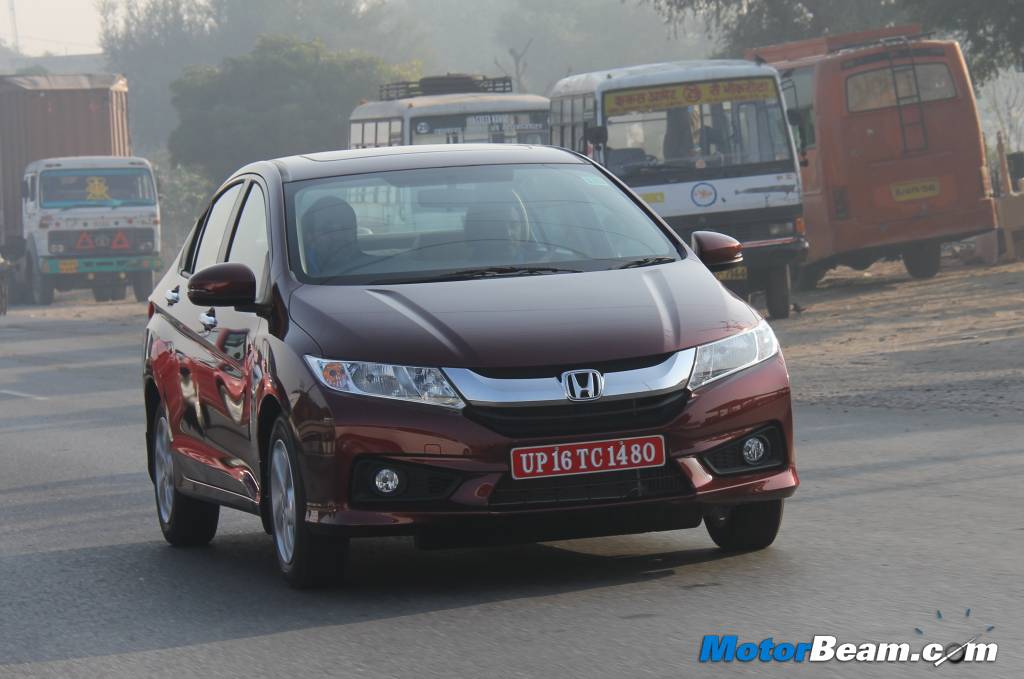
Driving Dynamics – The fourth generation City is based on the new Jazz whose dynamics were benchmarked against the Volkswagen Polo. The company has improved rigidity by 24% along with giving the car a new H-shaped torsion beam suspension. The City has been known for being very dynamically rich and the new model is no different. The suspension set-up is very mature and the car offers a very good balance of ride and handling. Like most Hondas, the suspension is a bit on the stiffer side, more so in the diesel model to handle the extra weight. Thus the petrol car rides better with a compliant ride although both models are pliant over bad roads, only to be unsettled on broken patches. High speed stability is good and occupants don’t realise the speed of the car as the vehicle remains glued to the road. Tyres and wind noise isn’t much at speed as insulation has been improved with several measures but both the diesel and petrol engines are quite audible at high revs.
Ride is very pliant but the puny tyres lack grip, tyre upsize recommended
The Honda City has always been a good handling car and the latest iteration continues to offer good body control with eagerness to enter corners. However the tyres on the car are really disappointing. In the interest of fuel efficiency, Honda has gone ahead with puny 175 mm section tyres (all the four generations of the City have used the same tyre width). Being under-tyred leads to loss of traction very quickly and plenty of screeches when cornering or braking hard. Braking performance is very good with the pedal offering the right feel and ample stopping power only to be let down by the narrow rubber which doesn’t provide enough grip to stop without drama. The steering is light at low speeds and only decently weighed at high speeds lacking feedback you would expect from a very potent driver’s car. Turning radius is short making city driving and parking a breeze. We did not scrape the underbelly of the car on our test and Honda has changed the exhaust layout to improve ground contact dynamics (the clearance has been increased by 5 mm as well).
The new Honda City is the most potent sedan in the C-segment today
Verdict – Honda’s approach towards the City clearly reveals the importance of the car for the Japanese company. Not only is the City an important car for the manufacturer, it’s also important for other C-segment companies as the vehicle always sets a new benchmark in the segment thereby indirectly dictating the next move of Honda’s competitors. Honda knows customers have high expectations from the City as the vehicle is an achiever’s car and the company wants to deliver more than what people ask for. Have they succeeded? Yes, in spades. The new City builds on the good points of the old car and offers what people in this segment want. High on comfort and quality, the new Honda City continues to offer a good balance of performance and efficiency, ride and handling, something which is bound to go down well with prospective buyers. With a diesel engine now available in the Honda City, the Hyundai Verna and Volkswagen Vento have real big reasons to worry. The new City creates a new benchmark in the segment and is undoubtedly the most compelling package in its class.
The third generation City is still a fantastic car and the new model is vastly improved which puts this Honda in an entirely new league. With a diesel engine, good mileage, improved interior room and long list of equipment, it’s just a matter of time before the Honda City claws back to the top spot it has always enjoyed.
Rear view camera has three views and is neatly integrated into the head unit
What’s Cool
* Equipment
* Interior Space
* Petrol engine sound and outright acceleration
* Mileage
What’s Not So Cool
* Diesel engine gearbox and noise
* Puny 175 mm width tyres
Alternatives: Hyundai Verna, Volkswagen Vento, Nissan Sunny, Ford Fiesta
The 2014 Honda City is vastly improved and will definitely appeal to a wider audience
2014 Honda City Specifications
* Engine: 1497cc, SOHC, i-VTEC, 16V, 4-cylinder (P), 1498cc, DOHC, i-DTEC, 16V, 4-cylinder (D)
* Power: 119 PS @ 6600 RPM (P), 100 PS @ 3600 RPM (D)
* Torque: 145 Nm @ 4600 RPM (P), 200 Nm @ 1750 RPM
* Transmission: 5-speed manual (P), 7-step CVT (P), 6-speed manual (D)
* Top Speed: 195 km/hr
* 0-100 km/hr: 9.83 seconds (P), 11.97 seconds (D)
* Fuel Consumption: 10-12 km/l (P), 15-18 km/l (D)
* Fuel Type: Petrol, Diesel
* Suspension: McPherson Struts (Front), Torsion Beam (Rear)
* Tyres: 175/65/15
* Brakes: Ventilated Disc (Front), Drum (Rear), ABS
* Safety: ABS, EBD, Dual Airbags, Immobiliser
2014 Honda City Dimensions
* Overall length x width x height: 4440 mm X 1695 mm X 1495 mm
* Wheelbase: 2600 mm
* Turning Radius: 5.3 metres
* Ground clearance: 165 mm
* Boot Volume: 510 liters
* Fuel Tank Capacity: 40 litres
* Kerb Weight: 1065 kgs (P), 1085 kgs (CVT), 1165 kgs (D)
Further Reading –
Maruti Ciaz vs Honda City
Maruti Ciaz vs Honda City – Video
Maruti Ciaz Review
Honda City Diesel Review
Honda City Long Term Review
Honda City Long Term Report
Mega C-Segment Shootout
Honda City vs Volkswagen Vento AT
Honda City vs Hyundai Verna vs Volkswagen Vento


